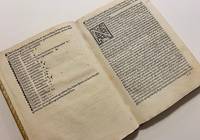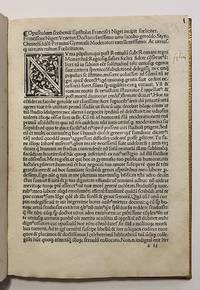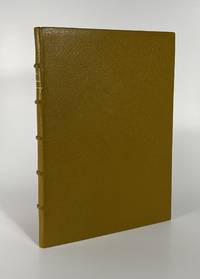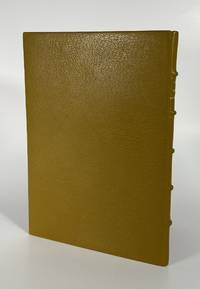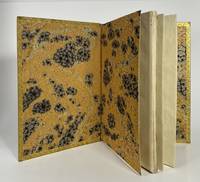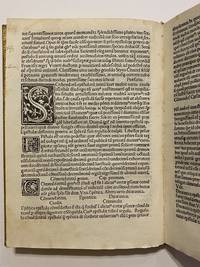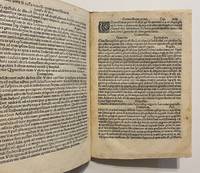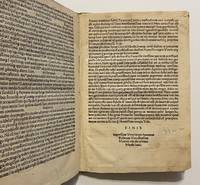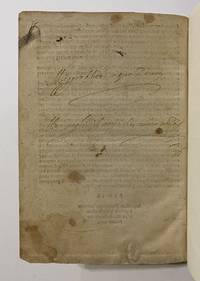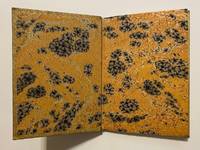[POST INCUNABLE ~ 1508]. De modo epistolandi ("The Art of Writing")
- SIGNED
- Venice: Ioannes Rubeus Vercellensis, 1508
Venice: Ioannes Rubeus Vercellensis, 1508. Very good. Small 4to. 32 ff. (some stains and repairs). Later inscriptions in Italian on final blank page. Bound in 20th-century French crushed niger morocco, five raised bands on spine, title lettered direct in the second compartment, turn-ins gilt, marbled pastedowns and endpapers, edges plain. An attractive copy. A FOUNDATIONAL TEXT IN HUMANIST EDUCATION, AND "ONE OF THE MOST POPULAR AND DISTINGUISHED GUIDES" TO LETTER WRITING, WITH MODELS AND DETAILED INSTRUCTIONS FOR SECRETARIES ON HOW NOT TO WRITE A LETTER.
Burckhardt ("Civilization of the Renaissance") emphasizes the importance of epistolography as an achievement of the true humanist: "To maintain a faultless style under all circumstances was a rule of good breeding, and a result of habit." The present pamphlet reached Europe-wide fame and was published in 43 editions in the fifteenth century alone.
Salloch, describing the need of humanists for exacting manuals for letter-writing, states: "One of the most popular and most distinguished of these guides was Franciscus Niger's, published first in 1488 [recte: 1487]. He gives a review of the different kinds of letters, from 'Epistola Commendaticia' to amatoria, gratulatoria, invectiva, jocosa, etc., furnishes examples of perfect letters, from classical as well as contemporary sources, and combines them with concise practical rules. Faultless Latin and a select use of the principles of rhetoric seem to be the characteristic features" (Salloch Catalogue 234, no. 973).
Venetian grammarian Francesco Negri (1452-1523) was a teacher at the Hungarian court of Hippolito d'Este, who had attracted a number of distinguished scholars in his Italian retinue. See Farkas Gabor Kiss, "Renaissance humanism in the age of the Jagiellonian kings in Hungary 1490-1526" (in: Hungarian Studies, Volume 36, issue 5, uploaded 2022). See also: Giovanni Mercati, "Francesco Pescennio Negro Veneto protonotario Apostolico" in: Ultimi contributi alla storia degli umanisti (Vatican City, 1939) III, 24-109, *1-*75.
Ours is the earliest of the two copies currently on the market; the other was published 35 years later, in 1543.
EDIT16 CNCE 61805 (locating five copies). Inexplicably omitted from Erdmann's massive 771-page "Ars Epistolica" catalogue (2014).
Burckhardt ("Civilization of the Renaissance") emphasizes the importance of epistolography as an achievement of the true humanist: "To maintain a faultless style under all circumstances was a rule of good breeding, and a result of habit." The present pamphlet reached Europe-wide fame and was published in 43 editions in the fifteenth century alone.
Salloch, describing the need of humanists for exacting manuals for letter-writing, states: "One of the most popular and most distinguished of these guides was Franciscus Niger's, published first in 1488 [recte: 1487]. He gives a review of the different kinds of letters, from 'Epistola Commendaticia' to amatoria, gratulatoria, invectiva, jocosa, etc., furnishes examples of perfect letters, from classical as well as contemporary sources, and combines them with concise practical rules. Faultless Latin and a select use of the principles of rhetoric seem to be the characteristic features" (Salloch Catalogue 234, no. 973).
Venetian grammarian Francesco Negri (1452-1523) was a teacher at the Hungarian court of Hippolito d'Este, who had attracted a number of distinguished scholars in his Italian retinue. See Farkas Gabor Kiss, "Renaissance humanism in the age of the Jagiellonian kings in Hungary 1490-1526" (in: Hungarian Studies, Volume 36, issue 5, uploaded 2022). See also: Giovanni Mercati, "Francesco Pescennio Negro Veneto protonotario Apostolico" in: Ultimi contributi alla storia degli umanisti (Vatican City, 1939) III, 24-109, *1-*75.
Ours is the earliest of the two copies currently on the market; the other was published 35 years later, in 1543.
EDIT16 CNCE 61805 (locating five copies). Inexplicably omitted from Erdmann's massive 771-page "Ars Epistolica" catalogue (2014).


![[POST INCUNABLE ~ 1508]. De modo epistolandi ("The](https://d3525k1ryd2155.cloudfront.net/h/981/402/1701402981.0.x.jpg)
